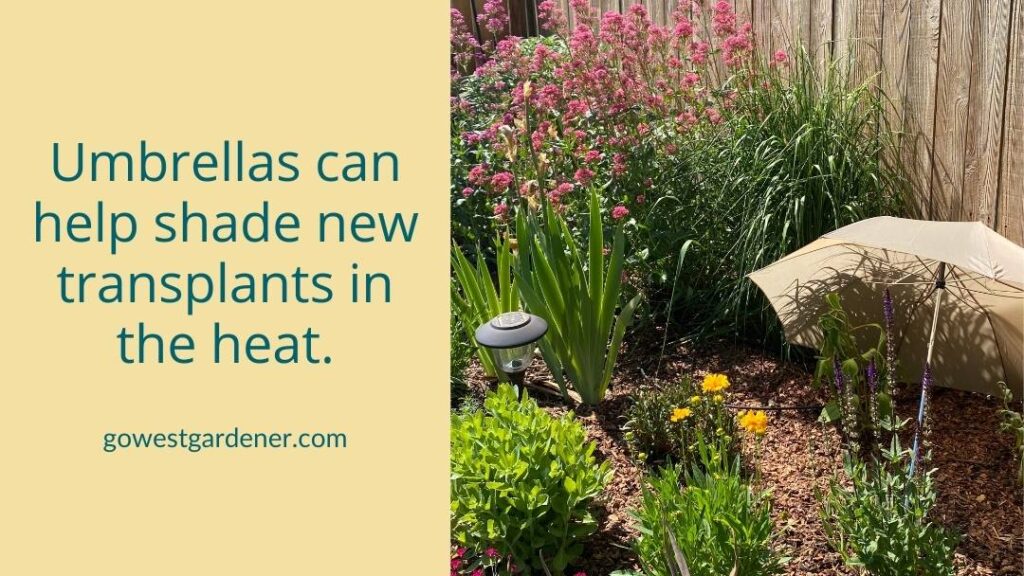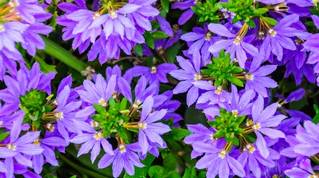Many years ago, I cheered on a friend as he ran a local marathon. As my friend began running, he looked like he belonged in a Nike ad: Strong. Healthy. Determined. Just do it, baby!
And he set a great pace until about mile 16 …
… when heat and exhaustion caught him like a cat chasing a mouse. Life decisions were questioned. (Was a burrito really the best decision for breakfast?) He was doing the best he could, but he was digging deep.
I find myself thinking about mile 16 as we slog through heat waves in our western gardens.
Temps are blazing. Weeds are thriving. Critters, like Japanese beetles, are munching. And munching. And munching.
It can feel a little exhausting. Garden decisions are questioned: Was it really the best idea to impulse-buy flowers in the last 2 weeks? (Asking for a friend. Ahem.)
Heat waves are an ideal time to talk about how to garden smarter, not harder.
If you find yourself gardening in the heat, here are 5 ways to keep the beauty coming with less effort.
1) Make sure your flower garden has 1-2″ of mulch.
Mulch is your friend when you’re gardening in the heat. It keeps your plants’ roots cooler. (Happier plants!) It keeps your plants hydrated. (Less watering!) It helps suppress weeds. (Less work!)
If you aren’t familiar with mulch, it’s a material you put on top of the ground—like small wood chips or “squeegee,” which is a smaller form of pea gravel.
You can even put mulch in a flowerpot if you want.
I use a few different materials for mulch, depending on the plants. Some of my gardens have mini-bark (small wood chips). Some have “soil pep” (a very fine wood mulch). I like these smaller wood mulches because they break down more easily than big, chunky wood mulch, adding organic material to my garden beds. They’re less likely to soak up water like big, chunky wood mulch. I also think they look better, but that’s just personal preference.
In my more xeric gardens (the low-water gardens), I use squeegee as a mulch. It drains well, and it doesn’t add organic material to the ground. Many low-water plants like “leaner” soil, meaning it isn’t rich in organic material.
2) Snap a few pics of your flowers on your phone.
Take note of which flowers look like champs in the heat, which plants are limping along, and which flowers are guzzling water like a 6-year-old chugging juice boxes.
At some point, you may wish to replace the strugglers and water guzzlers with flowers that thrive in our western heat and drought. That way, you can spend your time sipping chilled beverages and dazzling your friends with how fab your garden looks.
You can find western flower ideas here.
3) Focus your energy on newly planted flowers.
Have you popped any plants in the ground or in your flowerpots in the last 4 weeks? Those plant babies need more attention in the heat. Heck, even low-water plants need frequent watering their first season, so they can establish healthy roots.
For your in-ground plants, I’ve found that rain umbrellas make wonderful sun shields for new plants in extreme heat. Just make sure it isn’t windy. (Learned that one the hard way!)
You also can prop up shade cloth, which you can find at garden supply companies.
Another tip… Plant small, landscape flags next to your new plants during their first month. That way, you’re less likely to overlook them or forget to water them, especially if they’re tucked in among bigger plants.
When temps are blazing in months like July, it’s a good idea to check newly planted flowers every day (for the first 4 weeks or so) to see if they need water.
And consider trimming off the flower blooms on your newly planted perennials (the plants that come back every year). Snip, snip!
You may be thinking, “Wait, whaaaaat??”
I know that sounds a little crazy. You probably bought the plant BECAUSE OF the pretty blooms. But cutting off the flowers can allow your new plants to focus their energy on establishing good root systems in the heat.
4) Be smart with your flowerpots.
If possible, give your flowerpots a good soak in the morning by 10 am. Watering in the morning reduces evaporation, and it helps keep your flowers hydrated through the day.
Some flowers in your pots may wilt from heat, rather than just from lack of water. (I’m looking at you, Sweet Potato Vine.) Before you water, make sure the soil (dirt) in your flowerpots actually needs water, so you don’t overwater your flowers by accident.
You may want to move any flowerpots that are struggling in the heat to a shadier spot for a few days, if you can.
5) Find efficient ways to water your garden.
For example, check out drip irrigation. Drip lines are thin, little hoses that run near your plants’ roots. Drip systems are 90% efficient, compared to sprinkler systems which are only 50%-70% efficient, says the Colorado State University Extension.
Do you have clay soil—dense, sticky dirt that’s common in many parts of the intermountain west?
If yes, it helps to get in the habit of watering your established plants deeply and infrequently, instead of giving them quick, daily splashes of water. This encourages your plants to grow deeper roots, so their roots can find water in the ground. (Read: Less work for you.) Use your best judgment, of course. If your plants need water, then water them.
Stay strong! Stay cool! You’ve got this!














